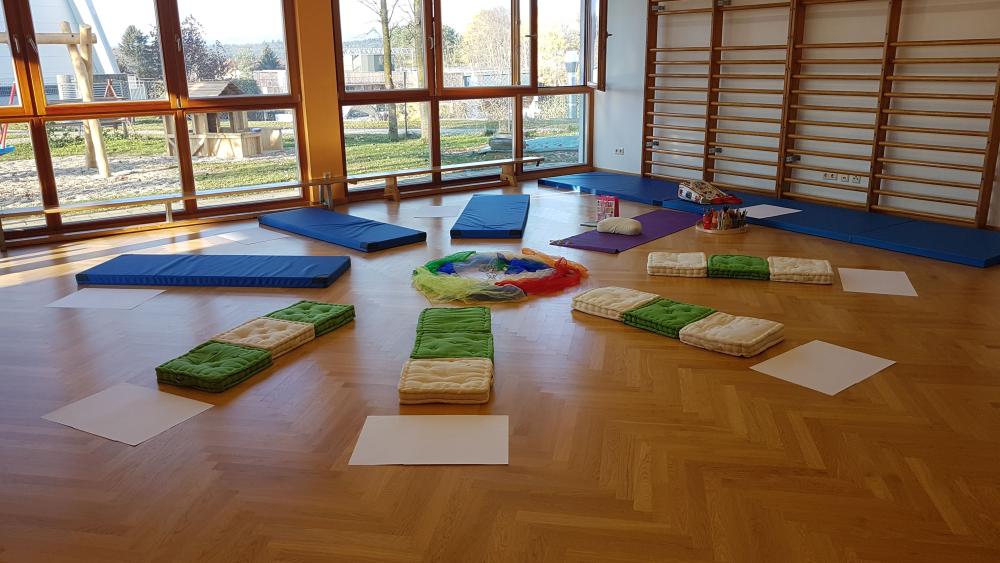Children's meditation - a journey inside -
Children grow up in a busy world full of stimuli, performance pressure and constant distractions. In this hectic environment, it's more important than ever to teach children how to find inner peace and connect with themselves. A great way to achieve this is through children's meditation. This practice, which has gained popularity in recent years, provides children with valuable tools to thrive in a demanding world.
The Importance of Children's Meditation
Children experience stress, anxiety, and overstimulation in ways that are sometimes difficult for adults to understand. They may have difficulty expressing and understanding their emotions, which can lead to frustration and behavioral problems. This is where children's meditation comes in as a valuable tool. Meditation is no longer reserved for adults seeking inner peace. It can be equally effective for children, if approached in an adapted and playful way. Children's meditation helps children:
-Develop emotional intelligence: meditation helps children to better connect with their emotions and to understand and express them in a healthy way.
-Reduce stress and anxiety: regular meditation can lower children's stress levels and help them cope with anxious thoughts.
-Improve attention and concentration: meditation can increase children's concentration and attention, which is beneficial for their daily activities.
Increase self-awareness: through meditation, children get to know and appreciate themselves better, which promotes a positive self-image.
-Better connection with themselves and therefore better connection with their environment
-For highly sensitive children, meditation is an important step to process their stimuli (Elaine Aron)
-They consciously learn to build moments of rest into their daily lives
Preparation children's meditation
Children's meditation differs from adult meditation in the approach and techniques used. Here are some tips to practice children's meditation in a fun and effective way:
-The most important thing is free will, children should not be forced.
-Keep it playful: kids learn best when they're having fun. Use imagination, stories, and creative visualizations to make the meditation fun and engaging. If necessary, use sounds and music. For example, you can also use singing bowls, sound bars or sound tubes
-Short sessions: children generally have shorter attention spans, so start with short meditation sessions of 5 to 10 minutes and build up gradually
-Prepare the meditation room well. Create a quiet and pleasant atmosphere, and let each child build their own island. With a children's meditation cushion, a yoga mat and possibly a meditation blanket or the colder seasons. A zabuton or meditation mat is also a possibility
-Breathing Exercises: teach children simple breathing exercises to help them calm down and become aware of their breathing. Immerse yourself in this theme!
-Guided visualizations: use stories and images to take children on an inner journey. For example, imagine that they visit a quiet place where they feel safe and happy.
-After a guided visualization, children can express their story through a drawing.
-Mindfulness through senses: Teach children to be mindful by becoming aware of their senses. This may include, for example, paying attention to the sounds around them, the taste of food, or the texture of objects.
Parents and educators as guides
Parents, teachers and caregivers play an important role in introducing children's meditation. By being involved in the meditation process themselves, they can encourage children to discover the benefits of meditation. Creating a calm and supportive environment is essential to make children feel comfortable with meditation.
It's much more than just sitting still and closing your eyes. It is a valuable tool that allows children to learn to deal with their emotions, reduce stress and understand themselves better. By approaching meditation in a playful and creative way, they can develop skills that will serve them throughout their lives. So let's guide our children to experience the magic of inner peace and self-discovery through children's meditation.
The above information comes from my years of yoga and meditation experience. I was also allowed to guide children and teachers at kindergartens and primary schools in yoga and meditation lessons. I advise you to delve deeply into the theme and not just give a meditation class with a group of children or school out of nowhere. Fortunately, there is a lot of literature on the market, both from the spiritual, educational and psychological perspective. The photo below was taken in an Austrian kindergarten, where I was also allowed to teach.
With a Sun Salutation by Yogini


 French
French German
German Nederlands
Nederlands

















